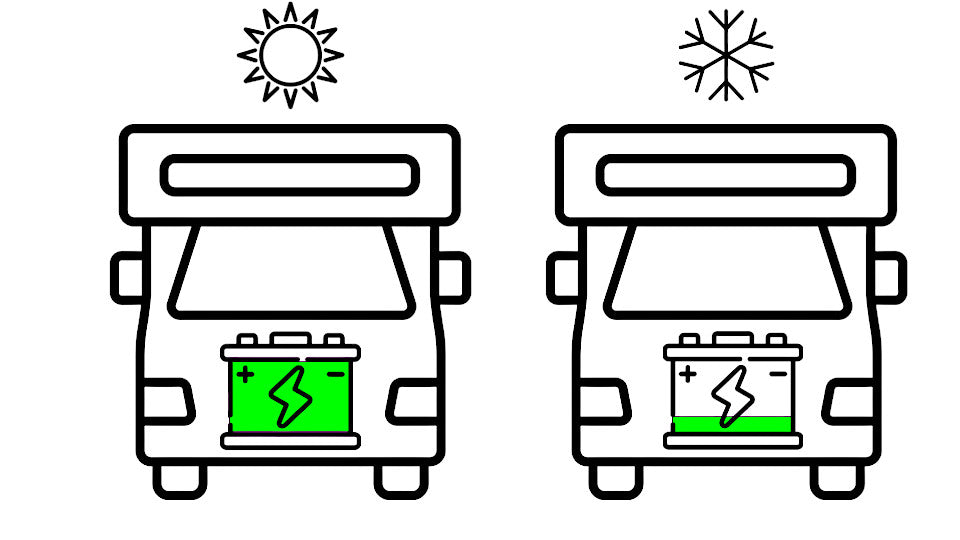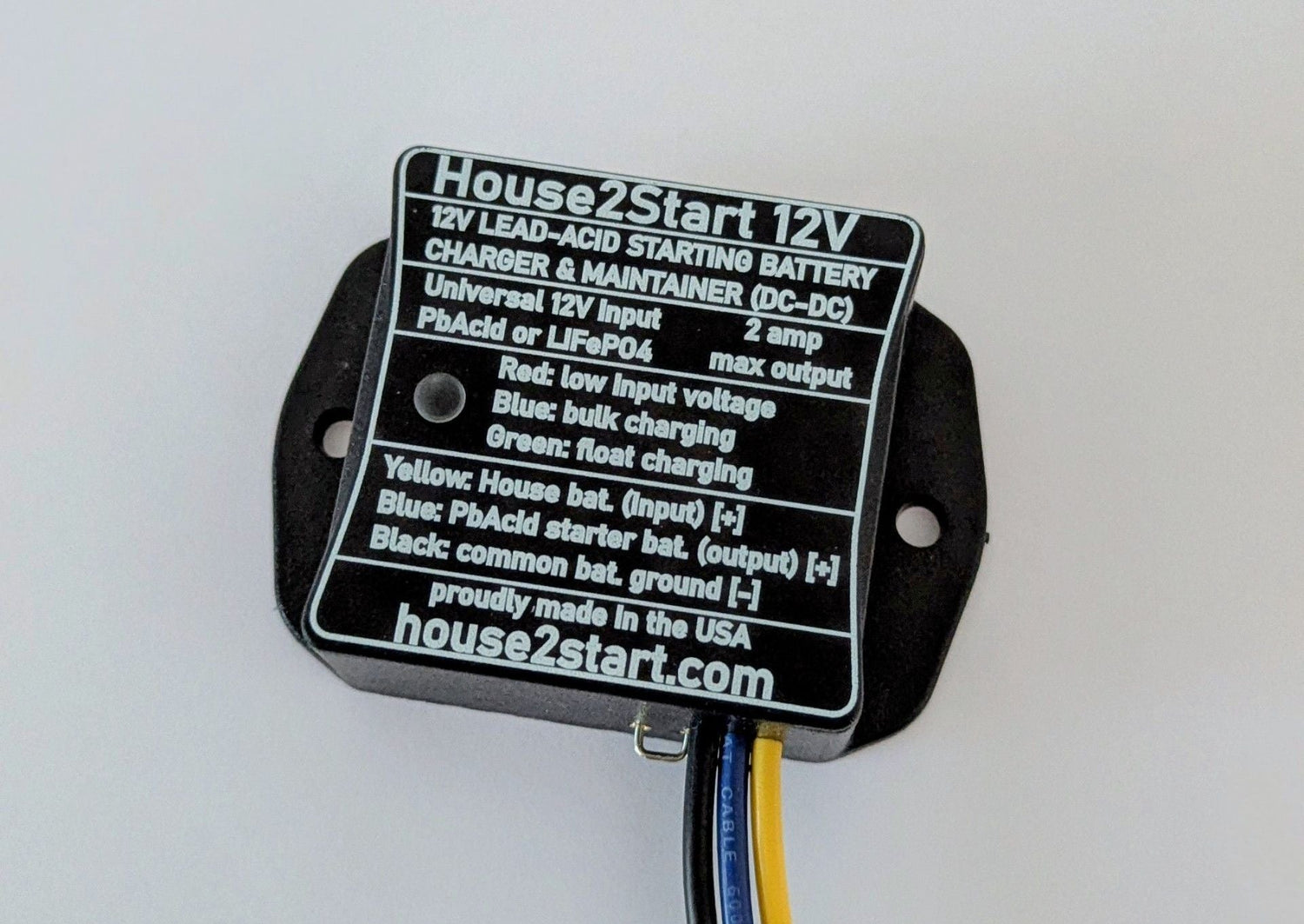
1️⃣ Why Your RV Starter Battery Dies in Storage
Share
This article is part of our 3-part RV Starter Battery Maintenance Series:
1️⃣ Why Your RV Starter Battery Dies in Storage
2️⃣ Common RV Starter Battery Maintenance Solutions
3️⃣ House2Start: The Intelligent Solution for Worry-Free RV Battery Maintenance
Introduction: The Silent Threat to Your Next Adventure
You’re ready to hit the road in your RV — but when you turn the key, the engine won’t crank. A dead starter battery is one of the most common (and frustrating) problems RV owners face after storage.
It’s not just an inconvenience. Repeated deep discharges can cut a battery’s lifespan in half, forcing premature replacement and unexpected costs. In this post, you’ll learn:
- The main causes of starter battery failure.
- How different battery types behave in RV systems.
- The “silent drain” that kills batteries even when your RV is off.
The Hidden Cost of Poor Battery Maintenance
Lead-acid starter batteries can last 5–7 years with consistent care. But occasional deep discharges can cut that down to 2–3 years.
- Every time a lead-acid battery is drained below 50% capacity:
- Sulfation accelerates.
- Capacity is permanently reduced.
The battery becomes more vulnerable to future deep discharges.
Why Batteries Die Prematurely
1. Sulfation — The Silent Killer
When a lead-acid battery sits partially discharged, lead sulfate crystals form on its plates. Over time, these crystals harden, reducing active surface area which reduces capacity and performance.
Prevention: Keep batteries charged consistently to reverse or prevent crystal buildup.
2. Overcharging & Undercharging
- Overcharging (too high voltage for too long) → excessive heat, electrolyte evaporation, plate corrosion.
- Undercharging (not reaching full charge for weeks or months) → worsens sulfation and can cause freezing damage.
3. Temperature Extremes
- High heat (>113°F / 45°C) speeds up corrosion
- Freezing temps (<32°F / 0°C) — a discharged battery can freeze & the case crack
These factors create a vicious cycle. Deep discharges make batteries more prone to sulfation, making the battery even more vulnerable to future deep discharges. This cycle is exacerbated by temperature extremes and inconsistent charging. To achieve the optimal five to seven-year lifespan, simply avoiding a completely dead battery isn't enough; maintaining a consistently healthy charge state is crucial.
💡 Key Takeaway: Avoiding a totally dead battery is not enough. Keeping your starter battery consistently in a healthy charge range is the real key to longevity.
Battery Types in RVs: Starter vs. House Batteries
Starter Batteries — Always Lead-Acid
- Flooded Lead-Acid (FLA): Lowest cost option, but requires water level checks.
- Absorbent Glass Mat (AGM): Sealed, maintenance-free, tolerates deeper discharges.
House Batteries — Many Chemistries
- Lithium (LiFePO4): 5–10+ year lifespan, thousands of cycles, lighter, faster charging.
- AGM or FLA: Still common, especially in older RVs.
Why This Matters:
Lithium house batteries charge to 14.6V — too high for long-term maintenance of lead-acid starter batteries. Over time, this mismatch can cause overcharging, water loss, and plate corrosion.
⚠️ Mixing chemistries without proper charging control is a common cause of premature battery failure.
The Silent Drain: Parasitic Loads
Even when “off,” many RV systems keep drawing power, these vampire loads are from:
- Radios, GPS units, alarms, remote locks, automatic steps
- Control panels, antenna boosters, 12V lights, CO monitors
- Faulty relays or converter issues
Typical drain:
- 50-75 mA for older systems
- Up to 200 mA for the newest RVs featuring advanced connectivity
Example:
50 mA parasitic drains 70 Ah battery to 50% in ~4 weeks
200 mA parasitic drains 70 Ah battery to 50% in ~1 week
Once a lead-acid battery sits discharged, sulfation worsens — starting a cycle of capacity loss and more frequent deep discharges.
Conclusion & Next Steps
Understanding battery degradation is the first step in avoiding a dead starter battery.
Key risks include:
- Sulfation from deep discharges.
- Over/undercharging.
- Temperature extremes.
- Parasitic loads.
In Part 2, we’ll explore the most common RV starter battery maintenance methods — from AC-powered chargers to battery disconnect switches — and reveal why some popular solutions aren’t as reliable as you might think.
Read Part 2: Common RV Starter Battery Maintenance Solutions →

